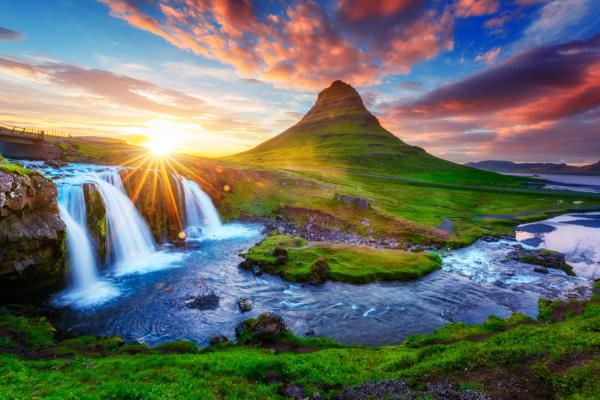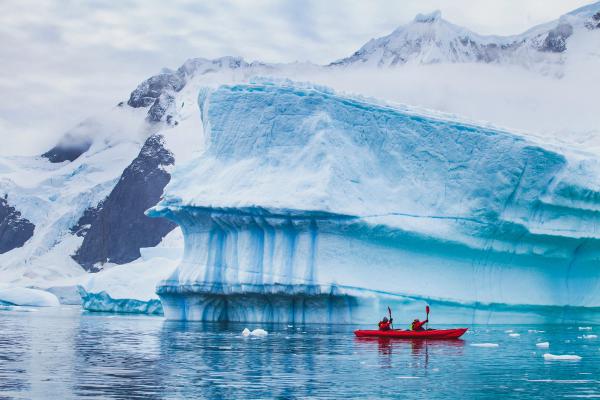
Unraveling the Mystery: The Origins of Iceland's Name
Have you ever asked yourself, "why is iceland called iceland?" or "why is Iceland Green and Greenland Ice?" or "why is Greenland Called Greenland?". So let's get into the questions surrounding Greenland vs. Iceland.
But why is Iceland called Iceland?
The story goes that the Vikings in Iceland thought it would deter people from visiting their beautiful island. So, to do this, they avoided the over-settlement by telling other people how beautiful Greenland was instead. And while this story is true, there are other factors to this bizarre yet clever story. So, let's break it down to the beginning.
Back in 850 CE, the first Viking landed in Iceland. His name was Naddador, and snow was falling all around him when he arrived, so he gave the country the name "Snow Land."
A while later, Viking Flóki Vilgerðarson made his way to Iceland. He had a sad story that he carried with him. On his way to the country, he lost his daughter, and his livestock shortly after. He was heartbroken when he arrived. He took some time exploring the area and climbed a large mountain. Once he reached the top, he looked at the vast land beneath him and a giant bay filled with icebergs. At that moment, he decided to rename "Snow Land" Iceland.
Iceland vs. Greenland
While Greenland and Iceland may seem like the same island, they are different countries with different climates. Therefore, the names may be confusing, and it's essential to know the difference between these two countries.
Iceland is known for its vibrant green meadows and enjoyable summers. In contrast, Greenland is known for being very cold and snowy, with little greenery. So why are the names opposite
Why Are Greenland and Iceland Switched?
We've already explained who named Iceland "Iceland" and why, so now we're going to do the same thing with Greenland. Hint: the story is the same but just the opposite.
Greenland was founded in 982 A.D. by Erik the Red. He found his way to southeastern Greenland, where it was once warmer than it is today. Erik fled Iceland after being convicted of murdering three people. Icelandic law demanded death or exile for murder. So instead of losing his life, he chose exile, eventually leading him to Greenland. Erik settled down in the country and gave it the name Greenland. Legend says he named it Greenland so more people would move there.
Once Erik settled down, smaller settlements started to appear within the country. Unfortunately, the Vikings who began to settle in Greenland did not know it was the Medieval Warm Period, meaning that the warm climate of the Northern Atlantic Ocean they were experiencing would eventually end.

Greenland's Evolution Throughout the years
Climate change played a significant factor in Greenland icing over. In A.D. 982, Greenland was still mostly covered in ice, but it was warm enough that the grass would become very vibrant during the summer months. Animals would graze in the meadows, and farms were still operating in the southwestern corner of Greenland, near the same latitude as Iceland.
The Indonesian volcanic eruption in 1257 CE ended the Warm Period and caused the Little Ice Age. That made the temperatures colder in both Iceland and Greenland. The cold weather affected everything from crops to cattle.
Eventually, the Vikings could not stand to stay there any longer. Food became scarce, and the cold became outright dangerous—the cold affected crops and fish, decimating the food system. Greenland became a ghost country for a while after all of the Vikings moved on to warmer weather. Ironically, most of them ended up back in Iceland. Unfortunately, climate change is affecting the Inuit people of Greenland, who comprise about eight percent of the total population.

The Future
While climate change has been an ongoing issue for both Greenland and Iceland over the past thousand years, the current warming temperatures are now seriously affecting Greenland. The ice sheet in Greenland is melting, making Iceland colder due to the constant melting of ice, causing the North Atlantic Ocean to become chillier. Since colder temperatures slow the Gulf Stream, the warm water from the Gulf of Mexico will no longer make it to Iceland. If this does continue over time, Iceland and Greenland could switch climates. Thus, ironically, fullfilling the Greenland and Iceland name controversy.
Conclusion
So why is Iceland called "Iceland" and Greeland "Greeland" when Iceland is green and Greenland is ice? It all started with a story about Vikings. Then climate change took over, and now the story is coming true. What happens in the future to Greenland is not certain. Only time will tell. Until then, we will enjoy both countries for their natural beauty and quaint towns, even if they are misnomered.
